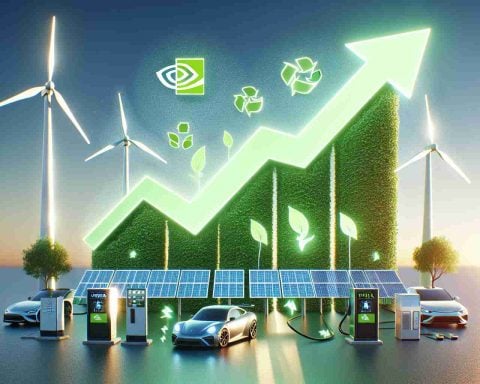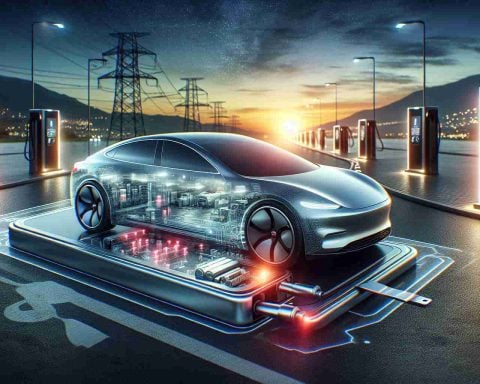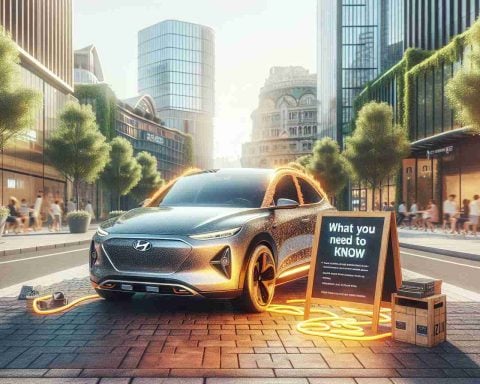- Tesla Model 3 registrations in California have declined by 36% in 2024.
- Overall sales for Tesla in California have decreased by 12%, showing a shift in consumer preference.
- Tesla’s market share in California’s zero-emission vehicle segment has dropped from 60.1% to 52.5% due to increasing competition.
- Rival companies like Honda and Hyundai are attracting consumers with innovative, affordable electric vehicle options.
- Factors such as CEO Elon Musk’s political involvement and the company’s headquarters move to Texas might affect public perception.
- Tesla needs to focus on technological advancements and possibly adjust its branding strategy to align with consumer values.
- The competition in California’s EV market is intensifying, requiring Tesla to innovate and regain market dominance.
In a state renowned for its embrace of electric vehicles, Tesla Inc. has encountered a rough patch. Model 3 registrations have plummeted by 36% in California for 2024, revealing a turbulent year for the company that once reigned supreme in the Golden State’s EV market. An overall sales decline of 12% for the year underscores a notable shift in consumer behavior.
Despite the buzz around the launch of the Cybertruck, Tesla’s grip on California’s zero-emission vehicle registrations has weakened, slipping from 60.1% to 52.5%. This drop highlights the rise of formidable competitors like Honda and Hyundai, attracting drivers with innovative, affordable options.
Beyond rival innovations, external factors have contributed to Tesla’s struggle. CEO Elon Musk’s high-profile political involvement and Tesla’s headquarters relocation to Texas may have altered public perception. In a state with strong Democratic support, this could sway consumers towards brands aligning more closely with their values.
As consumers navigate an evolving landscape favoring sustainability, the crucial question remains: Can Tesla adapt swiftly enough to regain its top spot? To retain a competitive edge, Tesla must continue pioneering tech advancements and possibly reassess its branding strategy to resonate with core consumer values.
The electric vehicle market is undoubtedly heating up, pressuring Tesla to steer through these turbulent times. The road ahead may be challenging, but the battle for dominance in California’s EV market is far from over. Stay tuned as Tesla aims to innovate and regain momentum in this dynamic sector.
Electric Rivals on the Rise: Tesla Faces New Challenges in California
Market Analysis: What’s Happening with Tesla in California?
1. Why have Tesla Model 3 registrations dropped in California for 2024?
The decline in Tesla Model 3 registrations, which plummeted by 36%, can be attributed to several factors. The competitive landscape in California’s EV market has intensified, with brands like Honda and Hyundai introducing innovative, affordable vehicles that appeal to a broader consumer base. Additionally, external influences, such as Elon Musk’s political activities and Tesla’s headquarters move to Texas, may have altered public perception, causing a shift among consumers who prioritize regional loyalty and political alignment.
2. How are Tesla’s competitors gaining ground in the California EV market?
Competitors like Honda and Hyundai have made significant strides by offering models that blend innovation with affordability. These brands have focused on features such as extended range, advanced driver-assistance systems, and eco-friendly manufacturing processes that appeal to environmentally-conscious consumers. Furthermore, their marketing strategies often highlight a strong alignment with California’s sustainability goals and political climate, giving them an edge in a market that values such alignment.
3. Can Tesla still maintain its leadership in the evolving EV market?
Despite the challenges, Tesla still holds a significant share of the market and has ample opportunity to regain momentum. By prioritizing cutting-edge technology, such as advanced battery systems, and expanding its vehicle lineup to include more affordable options, Tesla can appeal to a wider range of consumers. Additionally, reassessing its branding strategy to emphasize sustainability and regional loyalty could resonate with Californian values, helping it regain its top spot in zero-emission vehicle registrations.
Pros and Cons of Tesla’s Situation
Pros:
– Tesla remains a focal point for innovation in the EV industry, maintaining a strong brand presence.
– New product launches, like the Cybertruck, keep Tesla in the media spotlight, potentially driving future interest.
Cons:
– Declining registrations indicate a potential loss of consumer trust or interest.
– Competitors are closing the gap with competitive pricing and technology.
Market Forecast and Predictions
The EV market is poised for further growth, and Tesla’s ability to adapt will be critical. With sustainable and innovative initiatives, coupled with a shift in marketing focus, Tesla could recover and expand its influence beyond California. On the flip side, failure to adapt quickly could solidify competitors’ standings, potentially usurping Tesla’s historic dominance in this key market area.
Suggested Related Links
For more insights into automotive trends and innovations, visit:
– Tesla
– Honda
– Hyundai
















